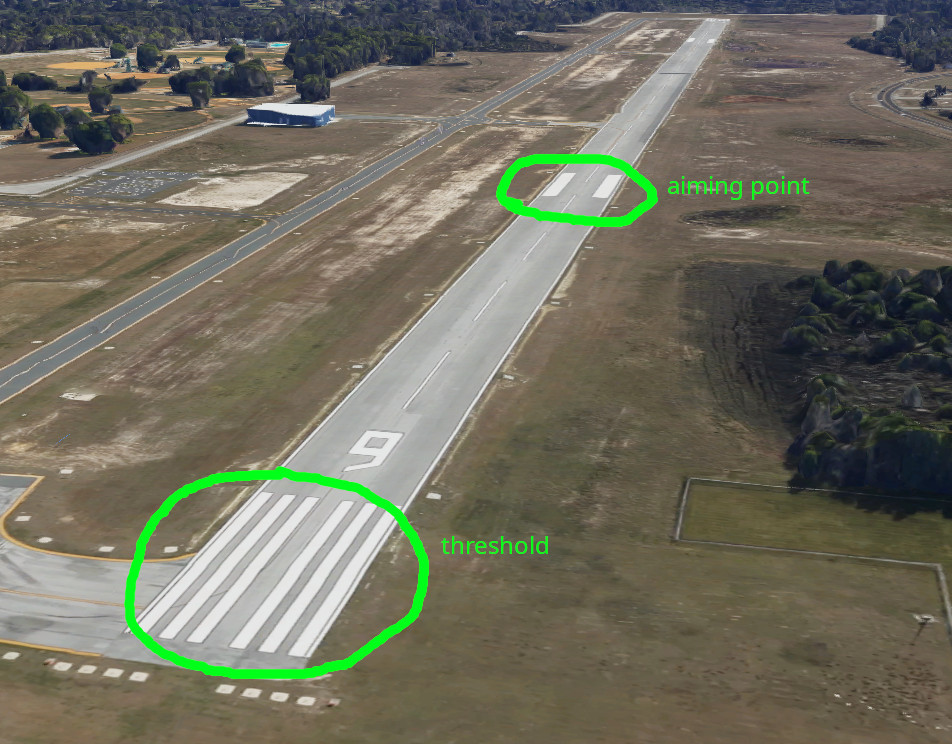Thunderstorms and heavy rain dominated the morning, prompting me to seize the opportunity for some much-needed rest. However, Florida’s weather is famously unpredictable. By early afternoon, the rain subsided, clouds dispersed, and the skies turned favorable for flying.
Upon reaching the airport, I discovered new puddles resembling lakes. Despite this, the runway and taxiways were clear, and the wind had calmed to zero. The only inconvenience was stepping into a large puddle while untying the airplane.
The tranquil conditions were ideal for honing various landing techniques — normal landings, short-field landings, engine-out scenarios, and sideslips. Testing the capabilities of the Cessna 150 with no wind, I confirmed its ability to takeoff and land from a 1000-feet runway. Utilizing runway threshold and aiming point markings, I was able to accurately determine distances: the distance between them is exactly 1000 feet.
It looks like that:

I know that Cessna 172, being a larger aircraft than the Cessna 150, has longer takeoff and landing distances. Additionally, factors like aircraft weight, wind conditions, and runway conditions play a role, so I definitely need to practice in 172 too later.
Leave a Reply